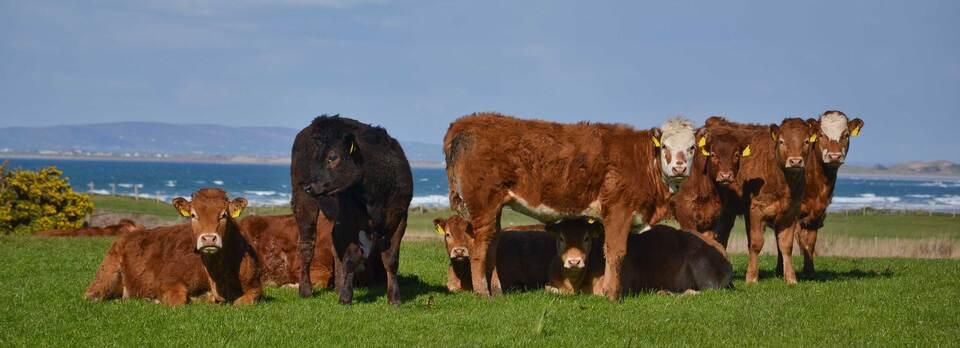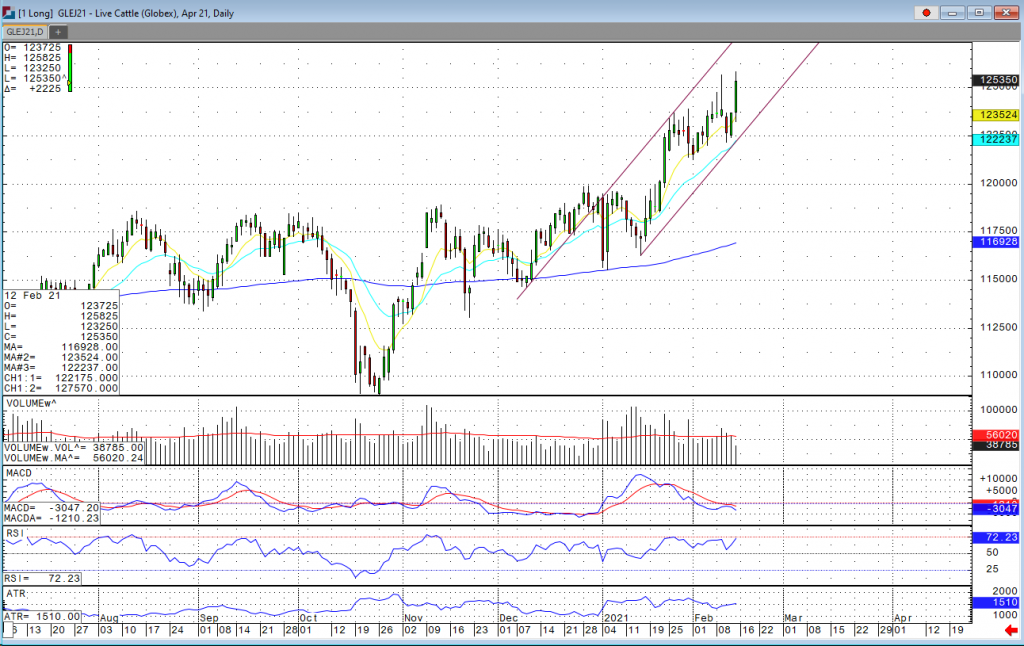
Fundamentally, weather is helping to support this market along with good demand, but on Tuesday a key reversal happened in the April LC contract which helps confirm a short-term top. On Wednesday, we saw some follow through to the downside, yesterday’s trade seemed to regain those losses but there wasn’t that much total volume. Cash live cattle are trading mixed as we move through the week, with slightly weaker prices reported in Kansas and Nebraska and slightly firmer in Texas/Oklahoma. In Kansas on Thursday, 879 head were reported at 113-144 with an average price of 113.78 versus an average of 113.96 last week. In Nebraska, 2,141 head were reported at 113-114 with an average price of 113.09 versus an average of 114.45 last week. In Texas/Oklahoma, 105 head were reported at 114 versus an average of 113.90 last week. Average dressed steer weights for the week ending January 30 came in at 920 pounds, down from 926 the previous week but up from 897 a year ago. The 5-year average weekly weight for that week is 891.0. Actual slaughter that week came in at 637,597 head which was up 2.82% from last year, but the higher weights pushed beef production to 553.2 million pounds, up 5.2% from last year.
US beef export sales for the week ending February 4 came in at 17,544 tonnes, down from 29,882 the previous week and the lowest they have been since January 7. The average of the previous four weeks is 24,998. Cumulative sales for 2021 have reached 302,851 tonnes, up from 234,874 last year and the highest on record. The 5-year average is 176,624. The biggest buyer this week was Japan at 5,115 tonnes, followed by South Korea at 4,296 and Mexico at 3,180. South Korea has the largest commitments for 2021 at 81,927 tonnes, followed by Japan at 63,759, Hong Kong at 42,769, and China at 42,111. The USDA estimated cattle slaughter came in at 116,000 head yesterday. This brings the total for the week so far to 461,000 head, down from 470,000 last week and 486,000 a year ago.



